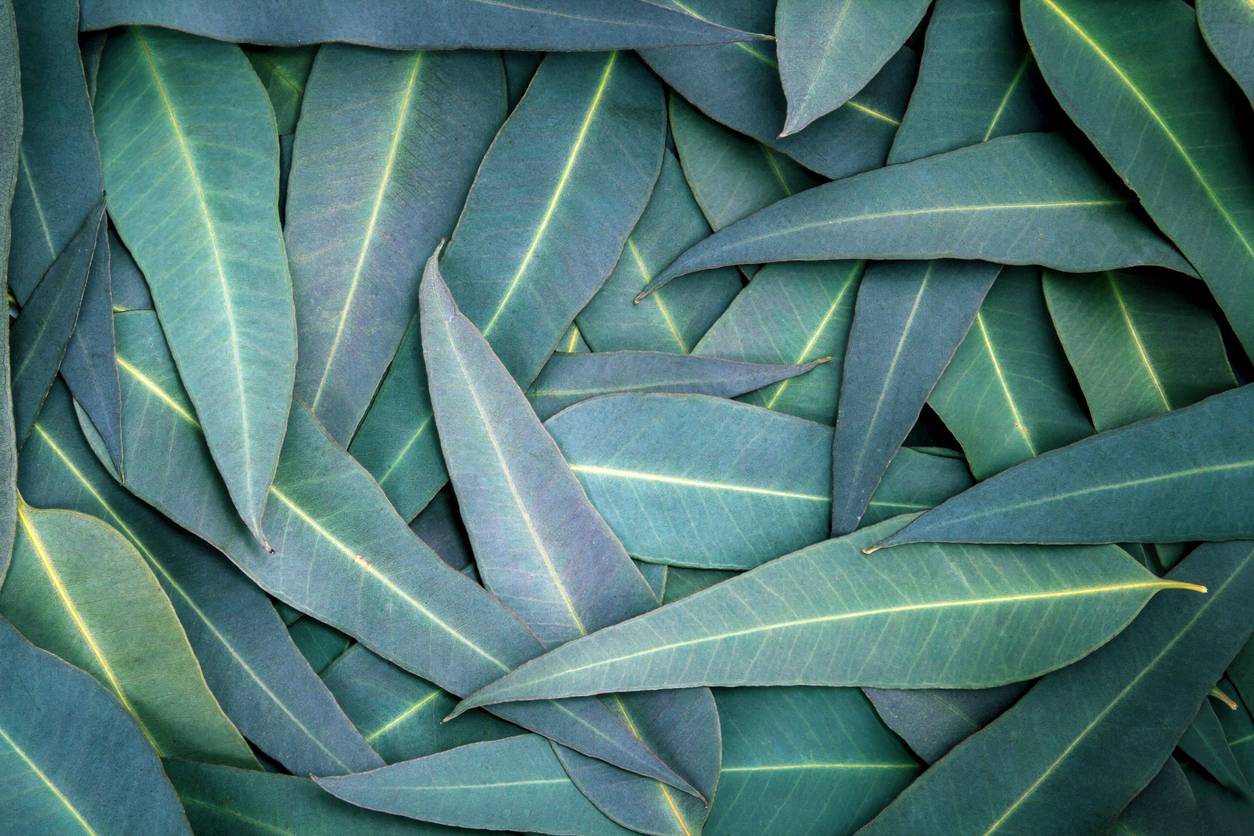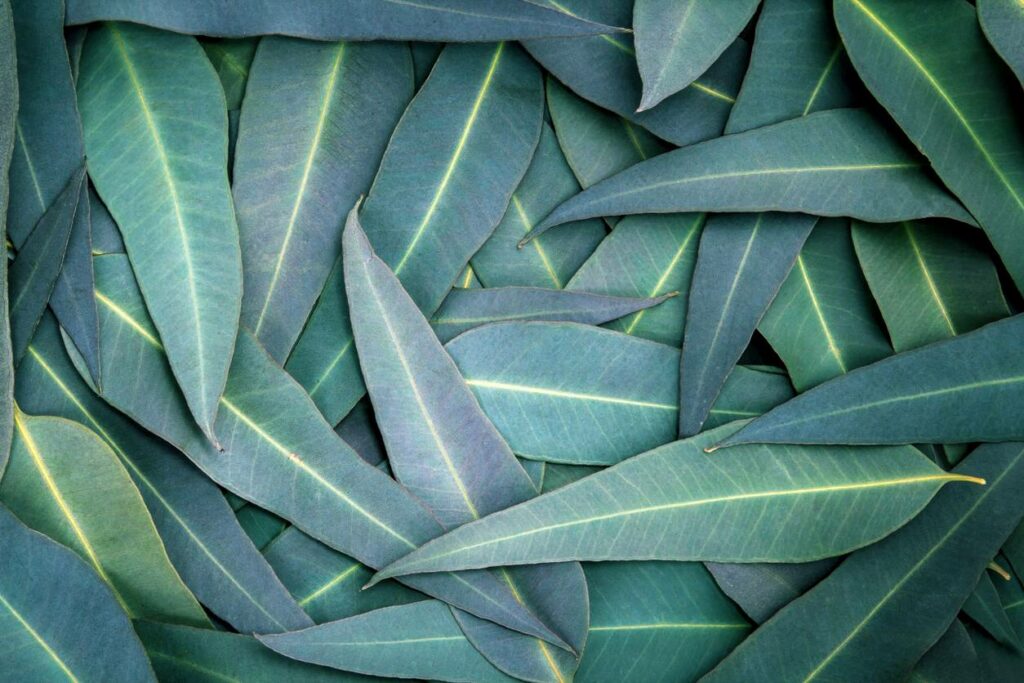Eucalyptus Tree Care – How To Grow And Care For Eucalyptus Trees
The Eucalyptus tree has just about invaded every corner of the world where it is the reigning tree in most parks, street corners, and landscapes. It helps that this hardy tree can tolerate any type of soil and grows well both in full sun and half shade. While the Eucalyptus tree has many benefits as we’ll see later, these days most people grow it in their gardens for ornamental and landscaping purposes mainly.
And since it comes in various sizes, you can grow it well in a container indoors as well as outdoors in the garden. Like most trees, the Eucalyptus tree is easy to care for and won’t put you out with too much maintenance. Let’s take a deeper look at these fascinating trees and see how you can grow one right there in your home.
Eucalyptus Tree at a Glance
A distinguished member of the Myrtaceae family, the Eucalyptus tree stands tall and towers over many trees in the garden. The mature tree reaches about 100 feet with ease. While originally it comes from Australia, this tree has wasted no time adapting to different climates and geographical regions. So much so, you can practically find it growing in every country in the world.
Every aspect of the Eucalyptus tree draws your attention. From the smooth bark that veers between brown and silver in attractive shades, to the leaves that shimmer in silver-green colors. For some people that’s enough reason to grow these hardy trees without the need for flowers. And in most cases you might not get flowers at all, especially if you live in colder climates.
But when the tree blooms it really makes your garden stand out. The pink to red flowers bloom in the summer and attract many pollinators with its sweet nectar.
Benefits and Uses of the Eucalyptus Tree
For centuries the Eucalyptus tree has provided mankind with shade and timber. But its benefits extend to other aspects of our lives beyond their obvious ornamental and landscaping values. Here are some of the different benefits that make these trees stand out.
- As a hardy tree with high tolerance to drought and poor soil, the tree is often grown in areas undergoing deforestation to restore the flora of the land.
- The tree is also a source of some of the most termite-resistant timber out there. Since the bark and gum of the tree are toxic, the wood of the tree doesn’t succumb to disease or decay the way other wood does.
- Its wood comes in pink and has alluring natural patterns. It goes into making furniture, floorings, and wooden kitchenware.
- The leaves and bark of the tree is rich in aromatic oil. This oil is used for relaxation, massage, meditation, stress management, and energy perking among other uses.
- In traditional medicines, extracts from the Eucalyptus tree help people with respiratory symptoms such as bronchitis and sinusitis. It has been used to tree the common cold, asthma, sore throat, and nose congestion.
- While there’s no scientific proof to back it up, many claim that ointment from the tree provides pain relief.
- Oil from the tree is a proven insecticide. It is a potent repellent against mites, ticks and even mosquitoes.
- Thanks to its antimicrobial and antibacterial qualities, extracts from the tree are the main ingredients in toothpaste, gum, and mouthwash.
Eucalyptus Tree Varieties
The Eucalyptus tree can be classified by type into three main types. These are Marlock Eucalyptus, Mallet Eucalyptus, and Mallee Eucalyptus. When you look for a variety to grow, make sure it belongs to the Marlock Eucalyptus type. Here are some varieties to consider.
- Eucalyptus gunnii: A giant of a tree that reaches 80 feet at maturity. It has an attractive bark that varies between brown and cream. The leaves are often blue-green but when the tree ages, the leaves become silver-green.
- Eucalyptus deglupta: Most famous for its colorful wood and the amazing patterns on the trunk. This explains its other name, the rainbow tree. The bark is just as attractive as the wood.
- Eucalyptus dalrympleana: A tall tree that could reach 70 feet high in the right conditions. The leaves have strong intrinsic fragrance although they are much more slender than your average Eucalyptus leaves.
- Eucalyptus cinerea: Grows to anything between 25 and 60 feet. Still, this is an outdoors tree since it needs plenty of space and sunlight. You can grow it as an annual in cold regions since it won’t survive cold winters. The bark is often dark red or cinnamon.
How to Grow Eucalyptus Trees
With USDA hardiness zones between 8 and 11, the Eucalyptus tree is a hardy tree that tolerates different soil types and weather conditions. You can grow it from seeds or from a cutting. Growing from seeds requires more patience and work. So we’ll focus here on growing from a cutting. Here’s how you go about it in easy steps.
- The best time to plant the tree is in the spring.
- Choose a healthy new shoot and cut about 6 inches of it using a clean and sterilized knife.
- Remove the leaves from the base of the cutting.
- Make a cut at an angle near the last node and dip the cutting in a growing hormone powder.
- Fill a small pot with a general potting mix and leave one inch near the edge.
- Dig a small hole in the soil and plant the cutting. Refill with soil and pack it to keep the cutting standing upright on its own.
- Water the soil enough to make it moist without soaking it or getting it waterlogged.
- Cover the pot with plastic to preserve the humidity and temperature around the plant.
- Keep the plant in a warm room with an average temperature around 70 degrees F.
- Make it a habit to mist the plant every day to improve the humidity levels.
- Once roots start to develop you can remove the plastic for a few hours to allow the plant to acclimatize to the room conditions.
- Once the plant is hardy enough to grow without the plastic cover, you can move it to its permanent place in the garden.
Eucalyptus Tree Care
One thing about the Eucalyptus tree, once it’s growing sturdy in your garden or pot, it will not demand much care or maintenance. However, you should know that both the leaves and bark tend to fall off the tree every year. You can use the leaves as mulch for other perennials and annuals in your garden.
Watering
Hardy as it is, your Eucalyptus tree still needs water in the right amounts. This is especially true when the tree is still growing and hasn’t been established in the garden. For trees growing indoors in pots, you will be the only source of water. How frequently you should water it depends on the weather and soil conditions. In sandy soil, you might have to water it everyday especially in the summer months. In other types of soil, once a week will be enough. Avoid drought since the trees tend to wilt when they don’t get enough water. Once the tree is a few feet tall, that is a good sign the roots have established and it won’t require frequent irrigation.
Fertilizer
As all good trees that grow to immense heights, the Eucalyptus tree needs a good amount of plant food every year. This tree craves potassium but doesn’t like phosphates. So aim for a custom fertilizer that is low in nitrogen. Too much nitrogen has a negative impact on the growth of the tree as it increases the foliage growth at the expense of the root system. High nitrogen in the fertilizer makes the new shoots of the tree more sensitive to the weather and could die in the frost. If you want to speed up the growth of the tree, make sure to use a fertilizer rich in sulphur. Sulphur has all the growth boosting advantages of nitrogen without its drawbacks.
Mulching
While the leaves of the Eucalyptus tree are themselves a great source of mulch, you can use other organic materials such as pine needles or shredded bark. Mulching is important especially for a young tree. It prevents weeds and other competitive invasive plants from interfering in the feeding habits of the tree and stunting its growth. Clear about three feet of ground around the trunk of the tree and cover it with a thick layer of mulch. It prevents moisture loss in hot weather and keeps the soil temperature in the winter. Make sure your mulch doesn’t compost since that produces nitrogen which is not suitable for the tree.
Pests and Diseases
Thanks to their toxic qualities the Eucalyptus tree doesn’t attract many bugs or pests. However, the same cannot be said about diseases. Here are some of the pests and diseases to look out for.
- Silver Leaf Fungus: A lethal disease for many fruit trees such as plums, apples, and peaches. It also affects poplars and Eucalyptus trees. The most common cause of the infection is using contaminated pruning shears. Avoid pruning on humid days and always sterilize your gardening tools after every use.
- Blue gum Psyllids: These bugs are not fatal to the tree but they will put a dent in its beauty. They feed on the sap and ruin the look of the leaves and bark. In young trees, an infestation of these bugs could stunt the growth of the tree. Mature trees will not be impacted as much though. The best treatment is to spray the tree trunk and foliage with an insecticide. You should do this in the early spring around the growth season. The bugs don’t survive the winter though, so you’re good for the rest of the year.

